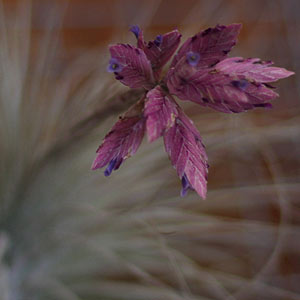
Members of the Bromeliad family Tillandsias are a fascinating group of plants commonly called ‘Air plants’. And although they do grow ‘ in the air’ they do not actually live on air alone.
These plants have a sophisticated system that allows them to use scales on their foliage to adsorb not only moisture, but the nutrients required for growth and survival.
They do have root systems, however in the natural environment they use these to attach themselves to trees and sometimes rocks, the do need moisture and in many ways the trees help provide this.
With well over 500 species it is a little daunting to choose the best varieties, however this will depend a little on your climate. The natural habitat ranges from tropical rain forests to near desert conditions.
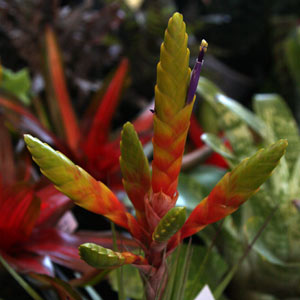
The varieties with denser (more scales) or coarser silver foliage and thick hard stems are usually the desert or dry climate varieties. Those with finer and greener foliage are generally those from the tropical or rain forest areas.
We also have size variations from plants to much larger specimens. And although they are said to be slow growing, which is generally tree, some will grow a little faster than others.
Flowers vary as well from the spectacular such as those on Tillandsia dyeriana, to rather small and almost insignificant flowers.
Air Plants or Tillandsias are a popular and easy going Bromeliad readily available for sale online.
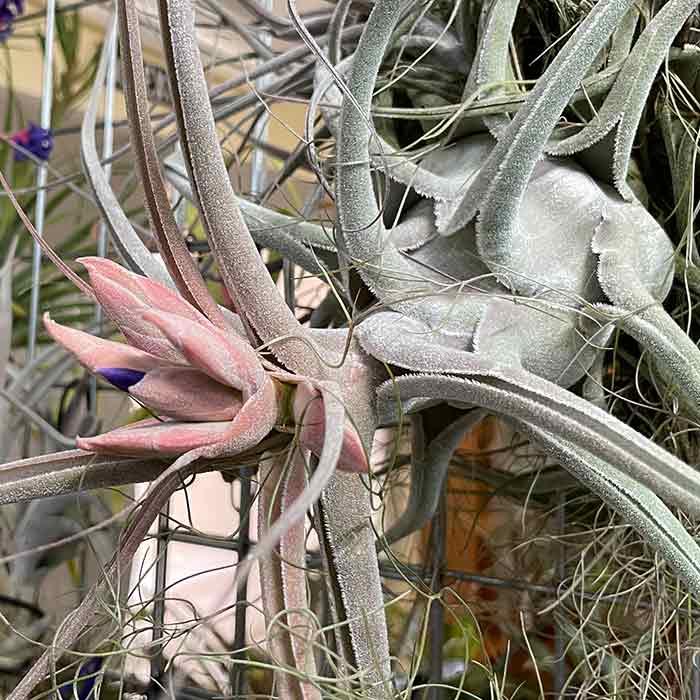
For many gardeners it is a little hard to accept that these plants do not really require fertilizer, they don’t, however it can be beneficial in some circumstances.
In terms of plant care like all Bromeliads Air Plants do not like frost and will require some protection. Air plants can be a great cover for a shady garden wall and could be a star attraction on a vertical garden in a shaded position.
Tillandsia Care
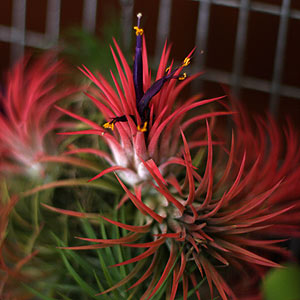
Tillandsia care (Air plants) is not difficult, and growing these rewarding and fascinating plants is well worth the effort.
Air Plant care is based around adequate moisture, light, air circulation and fertilizer just like most plants.
We provide a brief guide and simple instructions on how to care for your Tillandsia or ‘air plants’.
Most species are mounted on wood, board or cork, try for chemical free mounting material.
However we have seen them growing in the top of glass jars, not mounted and with no growing medium at all.
Growing Conditions for Tillandsia
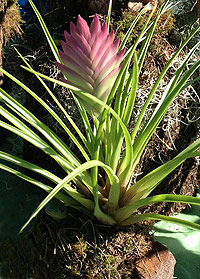
- Watering Air Plants – Air plants like to sprayed with a misting spray 2-3 times a week. If they become really dry they can even be soaked in clean water for a short time.
Some growers give air plants a soaking every two
weeks. HOWEVER long soakings can cause problems such as rot, so we suggest you just dip the plant into water and remove it.
Avoid soaking or wetting flowering plants unless you want to risk flower loss. - Light requirements for air plants – Air plants like bright light but not hot direct sunlight. Plants that are fading in colour usually need more light.
- Temperature for Air Plants – With so many species it is a little difficult to be exact, air plants are fairly tolerant of temperature.
- Fertilising Air Plants –
- Like all plants air plants require nutrients to flourish, a dilute (1/4 strength) low copper liquid fertiliser once every 2 months should do the job.
Tillandsia species
Popular species include:
- Tillandsia usneoides.
- Tillandsia ionantha
- Tillandsia recurvata,
- Tillandsia florida.
- Tillandsia bulbosa.
- Tillandsia dyeriana
- Tillandsia cyanea.
- Tillandsia crocata is a perfumed species.
Propagation
Tillandsia can be propagated from seed, and if you have fresh seed you will usually be successful.
You can sow seeds of a fine wire mesh or indeed on any medium that allows good air circulation. Seeds will germinate quickly however seedlings are very slow to grow into good sized plants.
The seeds need good filtered light, high humidity and good air circulation to germinate without setbacks from fungal diseases.
It is much easier, and quicker to seperate offsets, wait until they are 1/3 to 1/2 the size of the parent plant. They can then be soaked in water and mounted.

